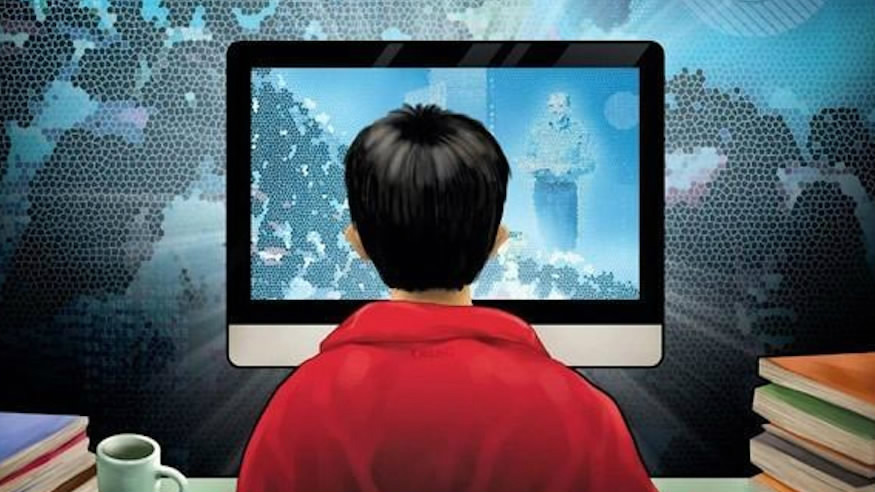


CGTN photo
More AI-related and coding courses are expected to be set up in China’s primary and secondary schools, said the State Council on the recently issued document of the Next Generation Artificial Intelligence Development Plan.
Considered as the key to productivity reform in the upcoming decades, AI technology’s rapid development is changing the society profoundly. China should seize the opportunity and join the promotion of AI popular science, encouraging more fundamental courses focusing on AI initiation, the State Council pointed out in the document.
Constructing more science infrastructure and providing more AI-related courses, China’s educational organizations will cultivate interests for the youth and ensure them more accesses to AI education, said the Plan.
Besides primary and secondary schools, governments will also support institutions of higher learning, vocational schools and socialization training Institutions to carry out AI skills training and foster more professionals, in order to meet the great demand of social development.

Chinese students are watching an AI-robot. /Chinadaily Photo
At the same time, more preferential policies and measures will be i place to encourage and support domestic AI enterprises to cooperate with international leading AI schools, scientific research institutes and teams, according to the State Council.
In fact, China has made a three-step national strategy to boost the AI industry development in China.
Firstly, China should have achieved important progress in a new generation of AI theories and technologies by 2020, having actualized important progress in big data intelligence, cross-medium intelligence, swarm intelligence and other main fields.
Then, China’s AI industry is expected to enter the global high-end value chain, where AI will be widely used in more fields such as intelligent manufacturing, intelligent medicine and intelligent city.
Finally, China will have seen the establishment of AI laws and regulations, ethical norms and policy systems, and the formation of AI security assessment and control capabilities by 2025.

 Award-winning photos show poverty reduction achievements in NE China's Jilin province
Award-winning photos show poverty reduction achievements in NE China's Jilin province People dance to greet advent of New Year in Ameiqituo Town, Guizhou
People dance to greet advent of New Year in Ameiqituo Town, Guizhou Fire brigade in Shanghai holds group wedding
Fire brigade in Shanghai holds group wedding Tourists enjoy ice sculptures in Datan Town, north China
Tourists enjoy ice sculptures in Datan Town, north China Sunset scenery of Dayan Pagoda in Xi'an
Sunset scenery of Dayan Pagoda in Xi'an Tourists have fun at scenic spot in Nanlong Town, NW China
Tourists have fun at scenic spot in Nanlong Town, NW China Harbin attracts tourists by making best use of ice in winter
Harbin attracts tourists by making best use of ice in winter In pics: FIS Alpine Ski Women's World Cup Slalom
In pics: FIS Alpine Ski Women's World Cup Slalom Black-necked cranes rest at reservoir in Lhunzhub County, Lhasa
Black-necked cranes rest at reservoir in Lhunzhub County, Lhasa China's FAST telescope will be available to foreign scientists in April
China's FAST telescope will be available to foreign scientists in April